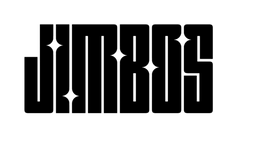Rinseless vs Waterless Car Wash – Key Differences Explained
Water restrictions, apartment living, and eco-conscious car owners have all fueled the rise of rinseless and waterless car washing methods. Both approaches promise to save water, reduce mess, and make washing easier without the need for a hose. But if you’ve ever wondered, what’s the difference between rinseless and waterless washing? — this post has you covered.
We’ll break down how each method works, when to use them, and which is safest for your car’s paint. By the end, you’ll know whether rinseless or waterless washing is right for you.
What is a Rinseless Wash?
A rinseless wash uses a specially formulated soap that encapsulates dirt so you can wipe it off safely without rinsing the car with running water. You still use buckets, wash mitts, and microfiber towels, but you don’t need a hose.
- How it works: Add rinseless wash solution to a bucket of water. Dip your towel or mitt, wash a panel, then dry it — no rinse required.
- Water used: 1–2 gallons total.
- Best for: Light-to-moderate dirt, dusty daily drivers, winter washing in garages.
Popular rinseless products include ONR (Optimum No Rinse), DIY Detail Rinseless, and McKee’s 37 Rinseless Wash.
What is a Waterless Wash?
A waterless wash skips the bucket entirely. It comes in a spray bottle and is designed to be misted directly onto the panel, then wiped away with microfiber towels.
- How it works: Spray product liberally on a panel, wipe with a microfiber towel, flip to a clean side, then buff.
- Water used: None (product itself is the cleaning solution).
- Best for: Very light dust, garage-kept vehicles, or quick touch-ups.
Waterless washing is essentially spray detailing with cleaning power, but it has limits when dirt levels are higher.
Rinseless vs Waterless: The Key Differences
| Feature | Rinseless Wash | Waterless Wash |
|---|---|---|
| Water Needed | 1–2 gallons | 0 gallons |
| Tools Required | Bucket, wash mitts, drying towels | Spray bottle, microfiber towels |
| Dirt Level | Light to moderate | Very light (dust, fingerprints) |
| Safety | Safer on slightly dirty cars | Riskier if car is more than dusty |
| Convenience | Requires setup, but thorough | Fastest, but limited |
When to Use Rinseless Washing
Choose a rinseless wash when:
- Your car has visible dirt, but not heavy mud.
- You live in an apartment or condo without hose access.
- You want to wash indoors during winter.
- You want more cleaning power and lubrication than waterless can provide.
When to Use Waterless Washing
Choose a waterless wash when:
- Your car is only dusty or has light pollen.
- You need a quick wipe-down before an event.
- You’re traveling and don’t have water access.
- You want to maintain a ceramic-coated vehicle with minimal effort.
Pro Tips for Both Methods
- Use lots of towels: Never reuse a dirty towel side — that’s how scratches happen.
- Pre-soak (if rinseless): Add a pre-spray step with a pump sprayer to reduce scratching risk.
- Stick to light dirt: If your car is heavily soiled, a traditional wash is still safest.
- Maintain with protection: Always finish with a ceramic spray like Tough As Shell to boost slickness and make future washes safer.
The Bottom Line
Rinseless vs Waterless? It comes down to dirt level and convenience. Rinseless is safer and more thorough when your car is lightly dirty, while waterless is ideal for quick dust removal and touch-ups. Both can be safe when done correctly, but neither should replace a proper wash if the car is heavily soiled.
Make Rinseless & Waterless Washing Safer
Boost your rinseless or waterless wash with a protective topper like Tough As Shell for months of gloss and easier cleaning.
👉 Get Tough As Shell on Jimbo’s Detailing
or
👉 Shop Tough As Shell on Amazon
Related Posts
- DIY Detail Rinseless Wash Review
- Waterless vs Rinseless Wash Comparison
- Rinseless Wash Comparison – DIY Detail vs Feynlab vs McKee’s



